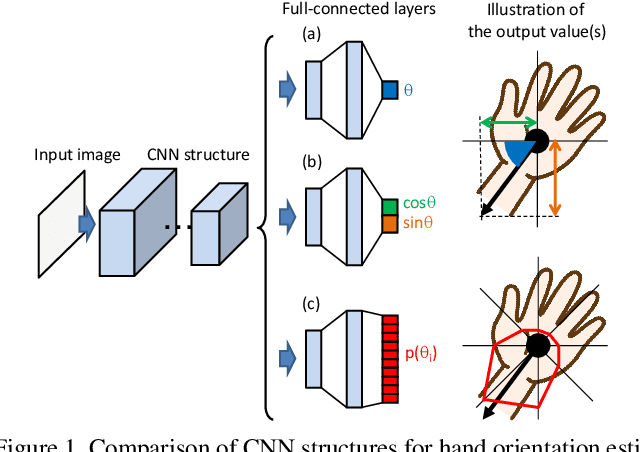Daisuke Deguchi
Single-Agent vs. Multi-Agent LLM Strategies for Automated Student Reflection Assessment
Apr 08, 2025Abstract:We explore the use of Large Language Models (LLMs) for automated assessment of open-text student reflections and prediction of academic performance. Traditional methods for evaluating reflections are time-consuming and may not scale effectively in educational settings. In this work, we employ LLMs to transform student reflections into quantitative scores using two assessment strategies (single-agent and multi-agent) and two prompting techniques (zero-shot and few-shot). Our experiments, conducted on a dataset of 5,278 reflections from 377 students over three academic terms, demonstrate that the single-agent with few-shot strategy achieves the highest match rate with human evaluations. Furthermore, models utilizing LLM-assessed reflection scores outperform baselines in both at-risk student identification and grade prediction tasks. These findings suggest that LLMs can effectively automate reflection assessment, reduce educators' workload, and enable timely support for students who may need additional assistance. Our work emphasizes the potential of integrating advanced generative AI technologies into educational practices to enhance student engagement and academic success.
CQVPR: Landmark-aware Contextual Queries for Visual Place Recognition
Mar 11, 2025Abstract:Visual Place Recognition (VPR) aims to estimate the location of the given query image within a database of geo-tagged images. To identify the exact location in an image, detecting landmarks is crucial. However, in some scenarios, such as urban environments, there are numerous landmarks, such as various modern buildings, and the landmarks in different cities often exhibit high visual similarity. Therefore, it is essential not only to leverage the landmarks but also to consider the contextual information surrounding them, such as whether there are trees, roads, or other features around the landmarks. We propose the Contextual Query VPR (CQVPR), which integrates contextual information with detailed pixel-level visual features. By leveraging a set of learnable contextual queries, our method automatically learns the high-level contexts with respect to landmarks and their surrounding areas. Heatmaps depicting regions that each query attends to serve as context-aware features, offering cues that could enhance the understanding of each scene. We further propose a query matching loss to supervise the extraction process of contextual queries. Extensive experiments on several datasets demonstrate that the proposed method outperforms other state-of-the-art methods, especially in challenging scenarios.
Generalizable Semantic Vision Query Generation for Zero-shot Panoptic and Semantic Segmentation
Feb 21, 2024Abstract:Zero-shot Panoptic Segmentation (ZPS) aims to recognize foreground instances and background stuff without images containing unseen categories in training. Due to the visual data sparsity and the difficulty of generalizing from seen to unseen categories, this task remains challenging. To better generalize to unseen classes, we propose Conditional tOken aligNment and Cycle trAnsiTion (CONCAT), to produce generalizable semantic vision queries. First, a feature extractor is trained by CON to link the vision and semantics for providing target queries. Formally, CON is proposed to align the semantic queries with the CLIP visual CLS token extracted from complete and masked images. To address the lack of unseen categories, a generator is required. However, one of the gaps in synthesizing pseudo vision queries, ie, vision queries for unseen categories, is describing fine-grained visual details through semantic embeddings. Therefore, we approach CAT to train the generator in semantic-vision and vision-semantic manners. In semantic-vision, visual query contrast is proposed to model the high granularity of vision by pulling the pseudo vision queries with the corresponding targets containing segments while pushing those without segments away. To ensure the generated queries retain semantic information, in vision-semantic, the pseudo vision queries are mapped back to semantic and supervised by real semantic embeddings. Experiments on ZPS achieve a 5.2% hPQ increase surpassing SOTA. We also examine inductive ZPS and open-vocabulary semantic segmentation and obtain comparative results while being 2 times faster in testing.
CLIP Is Also a Good Teacher: A New Learning Framework for Inductive Zero-shot Semantic Segmentation
Oct 03, 2023Abstract:Existing Generalized Zero-shot Semantic Segmentation (GZLSS) methods apply either finetuning the CLIP paradigm or formulating it as a mask classification task, benefiting from the Vision-Language Models (VLMs). However, the fine-tuning methods are restricted with fixed backbone models which are not flexible for segmentation, and mask classification methods heavily rely on additional explicit mask proposers. Meanwhile, prevalent methods utilize only seen categories which is a great waste, i.e., neglecting the area exists but not annotated. To this end, we propose CLIPTeacher, a new learning framework that can be applied to various per-pixel classification segmentation models without introducing any explicit mask proposer or changing the structure of CLIP, and utilize both seen and ignoring areas. Specifically, CLIPTeacher consists of two key modules: Global Learning Module (GLM) and Pixel Learning Module (PLM). Specifically, GLM aligns the dense features from an image encoder with the CLS token, i.e., the only token trained in CLIP, which is a simple but effective way to probe global information from the CLIP models. In contrast, PLM only leverages dense tokens from CLIP to produce high-level pseudo annotations for ignoring areas without introducing any extra mask proposer. Meanwhile, PLM can fully take advantage of the whole image based on the pseudo annotations. Experimental results on three benchmark datasets: PASCAL VOC 2012, COCO-Stuff 164k, and PASCAL Context show large performance gains, i.e., 2.2%, 1.3%, and 8.8%
Hand Orientation Estimation in Probability Density Form
Jun 12, 2019



Abstract:Hand orientation is an essential feature required to understand hand behaviors and subsequently support human activities. In this paper, we present a new method for estimating hand orientation in probability density form. It can solve the cyclicity problem in direct angular representation and enables the integration of multiple predictions based on different features. We validated the performance of the proposed method and an integration example using our dataset, which captured cooperative group work.
 Add to Chrome
Add to Chrome Add to Firefox
Add to Firefox Add to Edge
Add to Edge